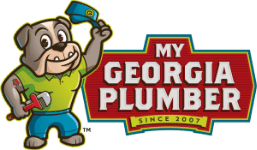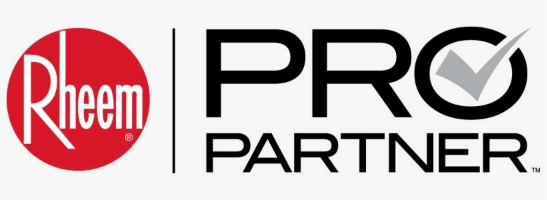
A continued summary of significant revisions of the International Plumbing Code to be published in the 2021 edition.
This is the continuation of a series of columns covering only the code changes that were approved as submitted from 2018 to the 2021 International Plumbing Code (IPC) change hearings. There were many code change proposals and two rounds of code hearings for the 2018 IPC. The following is a summary of the significant code changes that were approved during the International Code Council hearings in Columbus, Ohio, and Richmond, Va.
These code changes will appear in the 2021 edition of the International Plumbing Code, which will soon be published and available for jurisdictions to consider for adoption. I recommend you refer to the 2021 IPC for the final version of any code changes reported on hereinafter.
Proposed additions are underlined and deletions are struck through. They are followed by the proponents’ published reason statements, along with any of my comments, as noted.
Change: IPC Section 501.2
Revise as follows:
501.2 Water heater as space heater.
Where a combination potable water heating and space heating system requires water for space heating at temperatures greater than 140°F (60°C), a master thermostatic mixing valve complying with ASSE 1017 shall be provided to limit the water supplied to the potable hot water distribution system to a temperature of 140°F (60°C) or less. The potability of the water shall be maintained throughout the system. Requirements for combination potable water heating and space heating systems shall be in accordance with the International Mechanical Code.
Proponent’s reason statement: There are requirements in the International Mechanical Code for combination water heating and space heating systems that are covered in the IMC and not covered in the International Plumbing Code. The 2018 IMC provides a reference back to the IPC related to water-heating and space-heating systems; there should also be a link from the IPC back to the IMC.
This is a good code change because it requires compliance with both the plumbing and mechanical codes when using a water heater as a space heater. My experience with one piece of equipment performing two jobs is it causes the heaters’ burners to work longer, perform less efficiently and have a shorter life when performing both jobs.
Water heaters are open systems with water passing thru the system only one time. Heating boilers circulate the same heating water that can be treated so that minerals and oxygen in makeup water can be kept to a minimum. The normal life expectancy of a water heater, which is an open system, is about 8 to 12 years, according to one big-box retailer.
A heating boiler that is typically a closed system has an average life expectancy of about 15 to 30 years. A heating boiler is a closed system that does not introduce a large amount of water when the system is tight, so a closed system limits the oxygen and minerals introduced into a system and allows a longer service life.
Open systems such as domestic water systems used for water heaters typically have minerals that adhere to the heating surfaces as the burner is used more. Mineral and scale buildup on the heating surfaces causes a loss of efficiency between 2 percent to 7 percent, depending on the type of minerals and their insulating values for each 1/32-inch of scale on the heating surface.
So, 1-inch of scale in a water heater can use from 64 percent to 224 percent more energy to perform the same job as when the water heater was new. Corrosion and loss of heating efficiency can be a real problem for an open system such as a water heater. However, it is not much of a problem in closed heating systems such as boilers, where their burners can run closer to 60 percent of the time just for heating. The farther north you are, the longer the heating season will be.
If you combine both functions into one piece of equipment, when the heating surfaces scale up, the equipment’s burner will run much longer in an open system, which can cause an excessive waste of energy. Water usage patterns in buildings show that domestic hot water is used about 3 to 5 percent of the day and efficiency is a minimal to nominal concern, whereas heating boiler burners can fire up to about 60 percent of the time and a loss of efficiency in the heating burner, which can waste a significant amount of energy.
For this reason, among many others, many people do not promote the use of combined heating hot water and domestic hot water systems.
Code Change: IPC Section 501.2, 607.2.2 2
Revise terminology as follows:
501.2 Water heater as space heater.
Where a combination potable water heating and space heating system requires water for space heating at temperatures greater than 140°F (60°C), a master thermostatic temperature-actuated mixing valve complying with ASSE 1017 shall be provided to limit the water supplied to the potable hot water distribution system to a temperature of 140°F (60°C) or less. The potability of the water shall be maintained throughout the system.
607.2.2 Piping for recirculation systems having master thermostatic temperature-actuated mixing valves.
Where a thermostatic temperature-actuated mixing valve is used in a system with a hot water recirculating pump, the hot water or tempered water return line shall be routed to the cold water inlet pipe of the water heater and the cold water inlet pipe or the hot water return connection of the thermostatic temperature-actuated mixing valve.
Proponent’s reason statement: This proposal is almost editorial in nature as it is simply making the terminology (for the same component), consistent everywhere it is used in the code. The code currently uses different terminology to describe mixing valves complying with ASSE 1017: “master thermostatic valves” and “temper-actuated mixing valves.” There are also variations: “master thermostatic mixing valve,” “master thermostatic valves” and “thermostatic mixing valve.”
For consistency, the code needs to use the same terminology everywhere and that terminology should be aligned with title of the ASSE 1017 standard: “Temperature-Actuated Mixing Valves for Hot Water Distribution Systems.” Note that IPC Section 613.1 and IRC P2724.1 already use the proposed terminology. Those sections indicate the location for such valves: at the hot water source. This aligns with manufacturers’ instructions and the listing for ASSE 1017 valves. Thus, there is no need for the ambiguous term of “master” in the code.
My comments: This is a good code change because it improves the terminology related to mixing valves throughout the code.
Code Change: IPC Section 602.3.5
Revise as follows:
602.3.5 Pumps.
Pumps shall be rated for the transport of potable water. Pumps in an individual water supply system shall be constructed and installed so as to prevent contamination from entering a potable water supply through the pump units. Pumps intended to supply drinking water shall conform to NSF 61. Pumps shall be sealed to the well casing or covered with a water-tight seal. Pumps shall be designed to maintain a prime and installed such that ready access is provided to the pump parts of the entire assembly for repairs.
Proponent’s reason statement: The code would be more protective of public health if it required pumps to meet requirements of NSF 61. NSF/ANSI Standard 61 Drinking Water System Components-Health Effects helps to ensure that products/materials will not contribute harmful levels of contaminants to drinking water.
The current IPC and IRC already require conformance to NSF 61 for pipe, fittings, faucets, valves and tanks intended to supply drinking water. This requirement should also apply to pumps. Pumps are within the scope of NSF 61 (as are virtually all drinking water system components).
My comments: This is a good code change because it requires booster pump systems to meet NSF 61 requirements for components in contact with drinking water. I have investigated many plumbing systems and found unlined, cast-iron pumps installed in domestic water systems. When the pumps sit idle for a while, there is iron oxide or rusty water dispensed after a pump starts up and a rusty taste to the water.
Code Change: IPC Section 604.3
Revise as follows:
Water distribution system design criteria.
The water distribution system shall be designed, and pipe sizes shall be selected such that under conditions of sized for peak demand, the capacities at the fixture supply pipe outlets shall be not less than using the values shown in Table 604.3. The minimum flow rate and flow pressure provided to fixtures and appliances not listed in Table 604.3 shall be in accordance with the manufacturer’s installation instructions.
Proponent’s reason statement: The section and the table were intended to be used to set design capacities for the domestic water systems, not for field testing. With the emphasis on low-flow fixtures and lower flow rating for mixing valves, these numbers are causing confusion and misinterpretation in the field.
Looking at the table, what would be the health or safety reason for a bathtub to be required to flow at 4 gpm at 20 psi, or a water closet at 6 gpm at 20 psi, or even 3 gpm at 20 psi as the table states? Balanced mixing valves are shown as 2.5 gpm at 20 psi or even lower if the manufacturer indicates. How does the inspector regulate the psi from 20 to 8, depending on the fixture being measured? These are all design specifications and not volumes to be measured at the fixture at differing psi.
My comments: Although this seems on its surface to be a minor adjustment to the language, it appears there have been people commissioning or testing plumbing systems in buildings with newer, ultra-low-flow fixtures that have much lower flow rates than those in the table. The confusion is when a commissioning contractor with minimal plumbing experience is trying to commission a plumbing system and is expecting to see the flow rates in the table and the flow rates are much lower.
This is simply clarifying that the flow rates are used when determining the calculations for the size of the pipes, and they are not required flow rates for testing. However, the minimum flow pressures listed are still a valid test that can be done to determine the minimum pressure at a fixture.
Code Change: IPC Section 605.3, Chapter 15
Revise as follows:
2018 International Plumbing Code – Chapter 15
A269/A269M—15a:
Standard Specification for Seamless and Welded Austenitic Stainless Steel Tubing for General Service
Table 605.3 Revise as follows:
(Only the standards list that were changed are shown.)
(Portions of the table that are not changed are not shown.)
Proponent’s reason statement: Adding another standard for stainless-steel piping into the code increases flexibility in choices of piping.
My comments: This proposal is submitted by the ICC Plumbing/Mechanical/Gas Code Action Committee (PMG CAC).
(subhead) Code Change: IPC Section 605.3, Chapter 15
Revise as follows:
(Only the standards list that were changed are shown.)
TABLE 605.3
WATER SERVICE PIPE
| MATERIAL | STANDARD |
| Copper or copper-alloy pipe | ASTM B42; ASTM B43, ASTM B302, |
(Portions of the table that are not changed are not shown.)
Proponent’s reason statement: When combining copper and copper-alloy sections, this Standard ASTM B43 was accidentally removed from IPC Water Service Pipe Table 605.3. It is in IPC Water Distribution Pipe Table 605.4. It is also in the IRC Water Service Pipe Table 2906.4 and Water Distribution Pipe Table 2906.5. The IRC and the IPC need to correlate.
Code Change: IPC Section 605.5, Chapter 15
Revise Chapter 15 – Referenced Standards as follows:
F3226/F3226M-16:
Standard Specification for Metallic Press-Connect Fittings for Piping and Tubing
(Only the standards list that were added are shown.)
Revise Table 605.5 as follows:
(Only portions of the table that are changed are shown.)
Proponent’s reason statement: ASTM F3226-16 Standard Specification for Metallic Press-Connect Fittings for Piping and Tubing Systems is now published and includes carbon steel, stainless steel, copper and copper-alloy material grades. Including this standard will provide a reference standard for stainless-steel press-connect fittings and provide an additional press-connect standard for copper and copper-alloy fittings.
Code Change: IPC Section 605.12.3, 605.13.6
Revise as follows:
605.12.3 Solder joints.
Solder joints shall be made in accordance with ASTM B828. Cut tube ends shall be reamed to the full inside diameter of the tube end. Joint surfaces shall be cleaned. A flux conforming to ASTM B813 shall be applied. The joint shall be soldered with a solder conforming to ASTM B32. The joining of water supply piping shall be made with lead-free solder and fluxes. “Lead free” shall mean a chemical composition equal to or less than 0.2-percent lead. Solder and flux joining pipe or fittings intended to supply drinking water shall conform to NSF 61.
605.13.6 Solder joints.
Solder joints shall be made in accordance with the methods of ASTM B828. Cut tube ends shall be reamed to the full inside diameter of the tube end. Joint surfaces shall be cleaned. A flux conforming to ASTM B813 shall be applied. The joint shall be soldered with a solder conforming to ASTM B32. The joining of water supply piping shall be made with lead-free solder and flux. “Lead free” shall mean a chemical composition equal to or less than 0.2-percent lead. Solder and flux joining pipe or fittings intended to supply drinking water shall conform to NSF 61.
Proponent’s reason statement: NSF/ANSI Standard 61 Drinking Water System Components-Health Effects helps to ensure that products/materials will not contribute harmful levels of contaminants to drinking water. The current IPC and IRC already require conformance to NSF 61 for pipe, fittings, faucets, valves and tanks intended to supply drinking water.
This requirement should also apply to solders and flux. The current requirements in this section address lead content only but do not address the potential for other chemical contaminants as NSF 61 does. The code would be more protective of public health if it required NSF 61.
Code Change: IPC Section 202 Definitions, 605.13.7
Add new definition as follows:
202 – GENERAL DEFINITIONS
PUSH-FIT FITTING – A mechanical fitting that joins pipes or tubes and achieves a seal by mating the pipe or tube into the fitting.
Revise as follows:
605.13.7 Push-fit fitting joints.
Push-fit fitting joints shall conform to ASSE 1061 and shall be installed in accordance with the manufacturer’s instructions.
Proponent’s reason statement: Adding the definition from the ASSE 1061 standard for push-fit fittings.
Code Change: IPC Section 606.7
Delete without substitution:
606.7 Labeling of water distribution pipes in bundles.
Where water distribution piping is bundled at installation, each pipe in the bundle shall be identified using stenciling or commercially available pipe labels. The identification shall indicate the pipe contents and the direction of flow in the pipe. The interval of the identification markings on the pipe shall not exceed 25 feet (7620 mm). There shall be not less than one identification label on each pipe in each room, space or story.
Proponent’s reason statement: Current text is an unnecessary mandatory practice for flexible piping systems, not required for any other piping system. The piping is all water distribution piping, so why mark it so? Marking the direction of flow is also unnecessary. The stenciling is not described and the interval seems arbitrary.
My comment: The bundling of PEX piping in underground or above ground applications should be avoided. I have investigated several installations where hot- and cold-water pipe were bundled together and heat transferred from the hot- to the cold-water pipe, making it nearly impossible to get cold water from the cold faucet or to get hot water from the hot faucet







